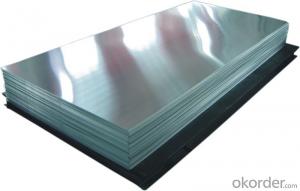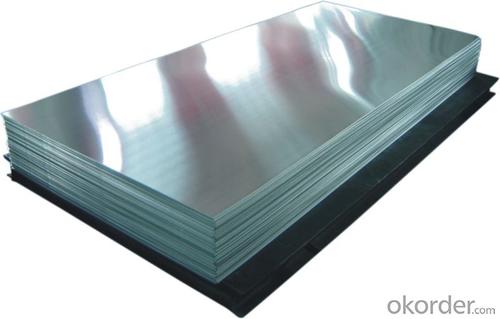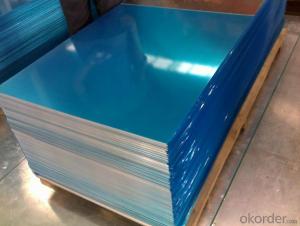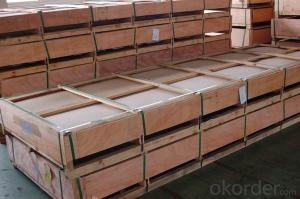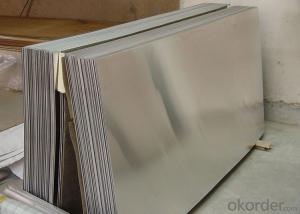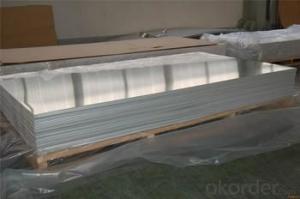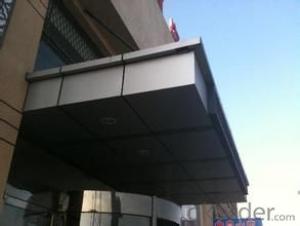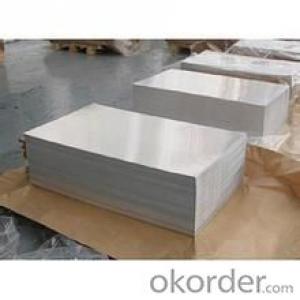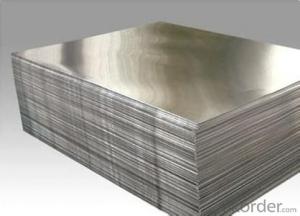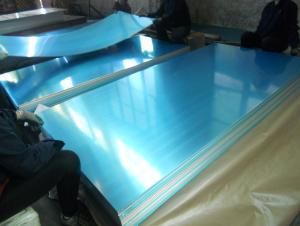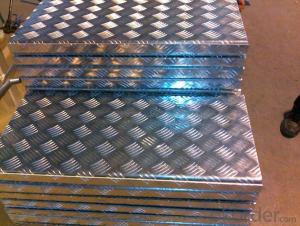Mill Finish Aluminum Plate - Sublimation Aluminum Sheets India
- Loading Port:
- Shanghai
- Payment Terms:
- TT OR LC
- Min Order Qty:
- 5 m.t.
- Supply Capability:
- 100000 m.t./month
OKorder Service Pledge
OKorder Financial Service
You Might Also Like
1.Structure of Mill Finish Alu Plate:
Mill Finish Alu Plate is designed for many field such as electronics, instruments, lighting decoration, packing industry, and house decoration, curtain wall, honeycomb-core panel, sandwich panel, aluminum composite panel, aluminum composite pipe etc.. Mill Finish Alu Plate is hard and everlasting under the blazing sun. You can choose the alloys as your habitation and we will do our best to meet your requests.
2.Main Features of the Mill Finish Alu Plate :
• Smooth surface
• High manufacturing accuracy
• High strength of extension and yield
• Well packaged
3. Mill Finish Alu Plate
Alloy: | AA1050, 1060, 1070, 1100, 3003, 3004, 3005, 3105, 5052, 5083, 5754, 8011, 8006 |
Temper: | H14, H16, H18, H22, H24, H26, H32, O/F |
Thickness: | 0.2-100mm |
Width: | 30mm-1700mm |
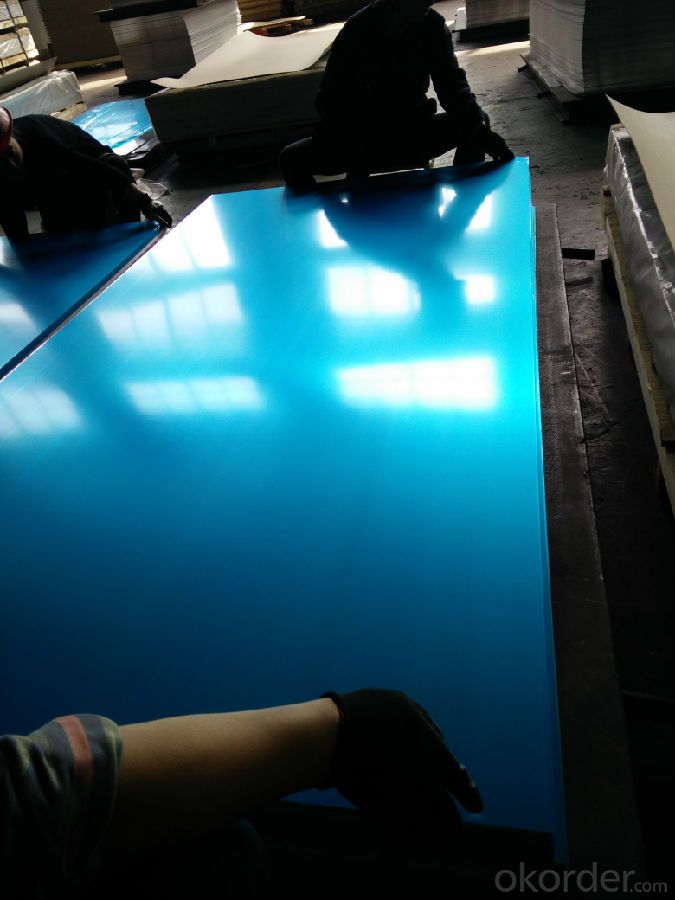
4. Production of Mill Finish Alu Plate
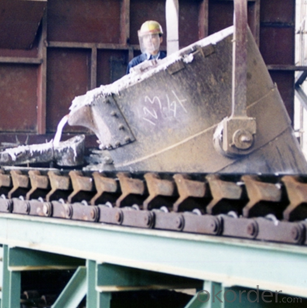
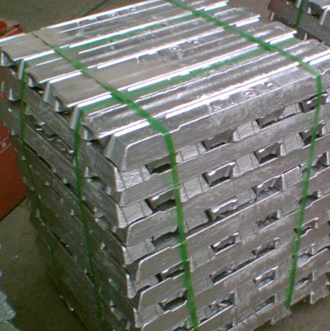
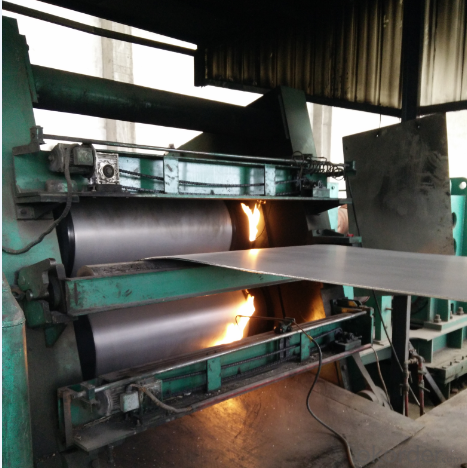
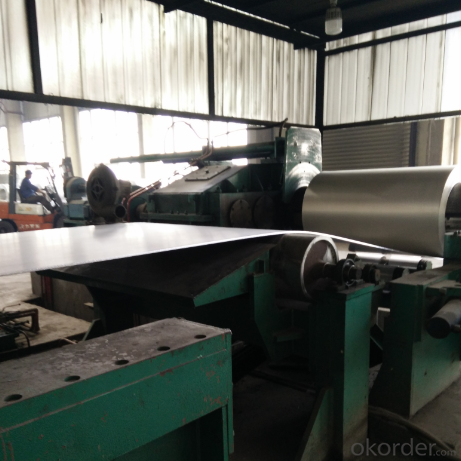
5.FAQ
We have organized several common questions for our clients,may help you sincerely:
① How about your company?
A world class manufacturer & supplier of aluminum coil and alloy blanks. Aluminum production base is comprised of 18 aluminum annealers, 10 coil and foil mills, 4 continuous production lines, 2 hot rolling production line and 3 prepainted lines.
Export 5000 tons per month to Asia, America and Middle East. Always do the best for our clients.
②Can you guarantee the quality of the products?
We are responsible for the quality of materials to get a long-term cooperation with clients in a reasonable period of time and we are glad to arrange and coordinate any third party inspection for you.
③What is the delivery time after purchase?
35 day after receiving client’s deposit or correct LC
- Q: Is it possible to utilize aluminum sheets in interior design projects?
- <p>Yes, aluminum sheets can be used for interior design purposes. They are lightweight, durable, and resistant to corrosion, making them suitable for various applications such as wall cladding, ceilings, and furniture. Aluminum sheets can also be painted or anodized to achieve different finishes, adding aesthetic appeal to your design. However, it's important to consider the specific requirements of your project, such as load-bearing capacity and thermal insulation, as these properties can vary with different types of aluminum sheets.</p>
- Q: why does the bubble apear a few minutes later after putting aluminum sheet into dilute sulphuric acid?
- Because there is oxide on the surface of aluminum, the reaction will be quicker after polishing the oxide with abrasive paper.
- Q: How do aluminum sheets perform in terms of dimensional stability?
- Aluminum sheets generally exhibit good dimensional stability due to their low coefficient of thermal expansion, meaning they are less likely to warp or deform when exposed to temperature changes compared to other materials.
- Q: Can someone explain the movement of electrons in a pure block of aluminum metal? At they free to move around between similar energy levels? Are they bound to Al atoms? What about orbital overlap?
- Any element that allows the transfer of electrical flow to move across it usually has the characteristic of having free movement electrons in the outer shell. This is why metals are particularly good at electrical conduction. The best metal for transferring electrical charge is silver followed by copper and then aluminum. Much electrical wire is made from pure aluminum because it is cheaper than copper or silver and the resistance to flow is only slightly lower than copper. The electrons in the outer shells are still bound to the aluminum nucleus but they are free to accept a charge from neighboring aluminum atoms and transfer that charge to the next aluminum in the electrical flow. This is basically the definition of electrical resistance. Copper performs this transfer more efficiently than aluminum so it's electrical resistivity is less than aluminums. But in both base metals, the outer electrons never leave the atom, they simply transfer their charge to the next atom in line
- Q: What are the different methods of forming aluminum sheet?
- Aluminum sheet can be formed using various methods, each with its own advantages and limitations. 1) Rolling is the most commonly used method for manufacturing aluminum sheet. It involves passing aluminum ingots through rolling mills, gradually reducing the thickness until the desired sheet thickness is achieved. Rolling is highly versatile, allowing for precise thicknesses and a wide range of sizes. 2) Extrusion involves forcing a heated aluminum billet through a die to create a continuous sheet. This method is often used to produce sheets with complex cross-sectional shapes and consistent thickness. It is ideal for creating aluminum sheets with consistent patterns or textures. 3) Casting entails pouring molten aluminum into a mold and allowing it to solidify. It is commonly used for producing large aluminum sheets with irregular shapes or intricate designs. However, the thickness of cast aluminum sheets may not be as consistent as those created through rolling or extrusion. 4) Stretch forming involves clamping a sheet of aluminum around its edges and stretching it over a die to achieve the desired shape. This method is commonly used for producing curved or contoured aluminum sheets, such as those used in automotive or aerospace applications. 5) Spinning utilizes a rotating disk or mandrel pressed against a sheet of aluminum to shape it into the desired form. This method is frequently employed to create cylindrical or conical aluminum sheets, like those seen in lighting fixtures or cookware. 6) Deep drawing involves placing a flat sheet of aluminum into a die and using a punch to force the metal into the desired shape. It is commonly used for producing aluminum sheets with deep, cup-like shapes, such as those found in beverage cans or automotive parts. Ultimately, the choice of method for forming aluminum sheet depends on factors such as the desired shape, thickness, and complexity of the final product, as well as production volume and cost considerations.
- Q: Is it suitable to use aluminum sheets as roofing materials in areas with high temperatures?
- <p>Yes, aluminum sheets can be used for roofing materials in hot climates. Aluminum has a high thermal conductivity, which means it can quickly dissipate heat, helping to keep buildings cooler. It also has excellent resistance to corrosion, which is beneficial in areas with high humidity or salt air. Additionally, aluminum is lightweight, easy to install, and can be recycled, making it an environmentally friendly option. However, it's important to ensure proper ventilation and insulation to maximize its performance in hot climates.</p>
- Q: Are aluminum sheets resistant to vibration?
- Yes, aluminum sheets are generally resistant to vibration. Aluminum is a lightweight and flexible material that has good damping properties, meaning it can absorb and dissipate vibrations. Additionally, aluminum has a high strength-to-weight ratio, which allows it to retain its structural integrity even when subjected to vibrations. This makes aluminum sheets a popular choice in industries such as aerospace, automotive, and construction, where vibration resistance is important. However, it is worth noting that the specific resistance to vibration may vary depending on factors such as the thickness and alloy of the aluminum sheet, as well as the intensity and frequency of the vibrations.
- Q: What are the electrical conductivity properties of aluminum sheets?
- Aluminum sheets are equipped with exceptional electrical conductivity characteristics. With its low electrical resistance, aluminum finds extensive usage in diverse electrical applications. It boasts a high conductivity rating, marginally lower than that of copper, rendering it an effective electricity conductor. This attribute enables aluminum sheets to efficiently transmit electrical current with minimal energy wastage. Consequently, aluminum is extensively employed in power transmission lines, electrical wiring, and electrical connectors. Moreover, aluminum's conductivity renders it suitable for applications requiring heat dissipation, such as heat sinks in electronic devices. In general, aluminum sheets are renowned for their favorable electrical conductivity, making them a preferred choice in numerous electrical and electronic applications.
- Q: Can 101 aluminum sheets be welded?
- Yes, 101 aluminum sheets can be welded.
- Q: What is the typical thermal conductivity of aluminum sheets?
- Aluminum sheets usually exhibit a thermal conductivity ranging from 205 to 230 watts per meter-kelvin (W/mK). Thanks to this remarkable thermal conductivity, aluminum serves as an exceptional conductor of heat. Hence, it finds widespread usage in various applications that prioritize efficient heat transfer, including heat sinks, power transmission lines, and cooking utensils.
Send your message to us
Mill Finish Aluminum Plate - Sublimation Aluminum Sheets India
- Loading Port:
- Shanghai
- Payment Terms:
- TT OR LC
- Min Order Qty:
- 5 m.t.
- Supply Capability:
- 100000 m.t./month
OKorder Service Pledge
OKorder Financial Service
Similar products
Hot products
Hot Searches
Related keywords
